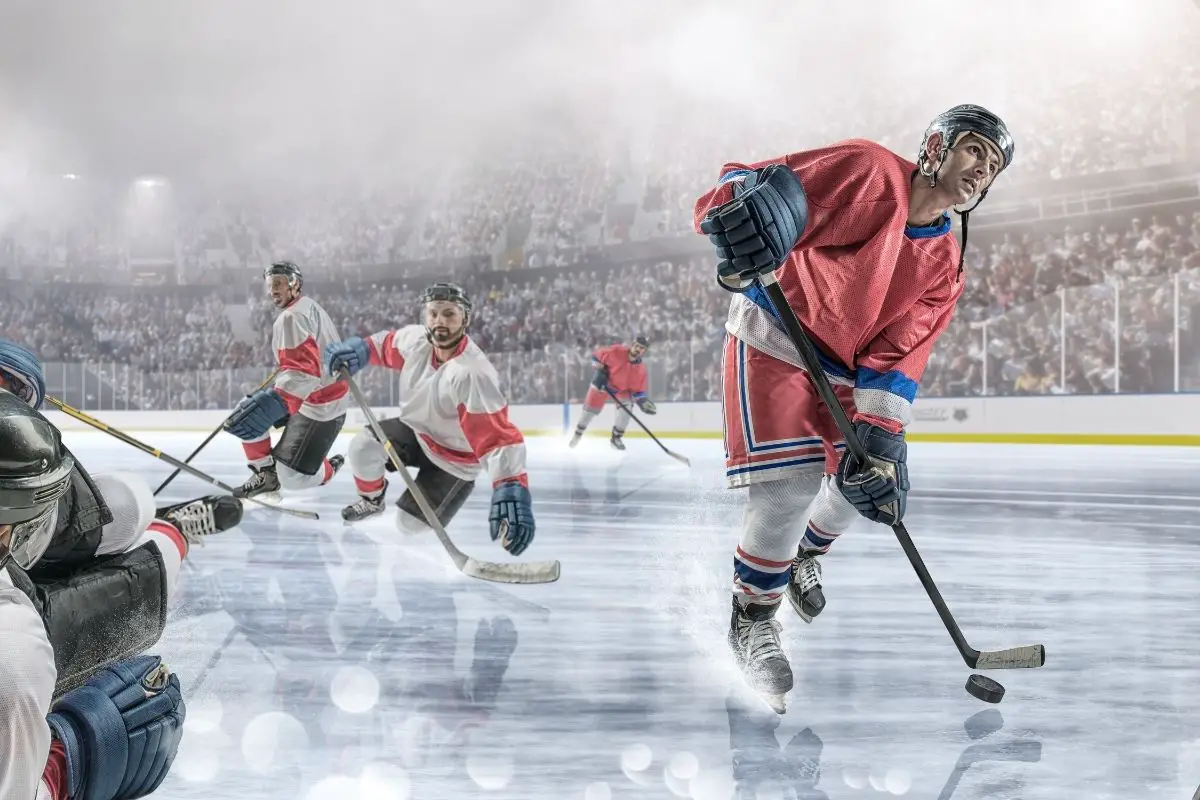Plenty of sports fans love collecting and trading cards of players from their favorite sports. The most popular ones are baseball, basketball, football, and, of course, hockey!
However, in this fast-growing hobby, there are plenty of technical terms that can be difficult for a newcomer to get their head around.
In fact, you may have heard sports card collectors talking about a parallel Hockey Card and wondered what the heck they were talking about! So, what is a parallel hockey card? Let’s take a look.

A parallel card is basically an alternative version of a non-numbered base card with its own serial number and different color scheme.
For example, most base hockey cards don’t have serial numbers, but a parallel hockey card would.
Aside from the serial number and a slightly different color scheme, parallel cards are pretty much the same as their base versions. They’ll have the same player, image, and design.
Are Parallel Hockey Cards Worth More?
Now that you know what a parallel hockey cards is, you might be wondering if they’re even worth collecting. If they’re almost completely identical to the regular basis cards, what’s the point?
Well, the parallel trading cards for any sport tend to be worth more than their base alternatives.
This is because the parallels will almost always have smaller print runs during production, meaning fewer of them will be in circulation.
If you know anything about sports card trading, you’ll know that rarity is one of the biggest contributing factors to a card’s value.
So, if it’s rarer, it’s going to be worth more. And since these parallel hockey cards are so much rarer than their base counterparts, they should be slightly more valuable.
How To Identify A Parallel Card
The easiest way to identify a parallel card is by looking at the back of the card.
Base cards usually have a small logo on the back, while parallel cards often have a larger logo.
You can also look at the design of the card compared to its base. For example, a parallel card will often have a different pattern and color scheme on the border around the edge of the card.
However, the main determiner will often be the serial number. Depending on the brand of trading card, there might not be a serial number at all on the base card, making it immediately obvious when one is a parallel card.
There are other ways to tell which card is the real deal, but these are the best indicators.
When Should You Collect Parallels?
Parallel cards aren’t just limited to hockey. In fact, they’ve been produced for nearly every sport imaginable, including:
- Football
- Basketball
- Soccer
- Baseball
- Boxing
- Mixed Martial Arts (MMA)
- Hockey
- And many more…
Collectors who specialize in parallel trading cards will often collect multiple sets of each type.
This means that instead of collecting only one set of a particular game, you could collect several sets of the same game.
For example, if you really like hockey, you could collect both a base and a parallel set of the same team or league.
Or, if you’re into boxing, you could collect a base set and a parallel set of two different boxers.
It’s up to you, though. Just make sure you get your hands on some of those parallel cards before they become too scarce!
Other Trading Card Terminologies

Parallels are just one of the many technical terms in the sports trading card world.
If you want to sound like an expert and understand what your trading card buddies are talking about, you’ll need to know what all of these terms mean:
Base Card
A base card is simply a normal version of a trading card. It has no special characteristics besides being the standard version of the card.
In most cases, this is the version that collectors will pay the highest prices for.
Insert
An insert is a single card from a specific series of cards. These inserts are usually found inside packs of base cards. They don’t necessarily come with a pack of base cards, either.
They can sometimes be found as a standalone item, such as a sticker or autograph.
Autographed Card
An autographed card is a regular card that has been signed by someone famous. Usually, these are baseball players, football players, basketball players, etc.
The term “autograph” comes from the old days of writing your name on a piece of paper and having it attached to something else.
The autograph was then used to authenticate the signature. Nowadays, genuine autographs on sports trading cards can add huge value for the right player. This will often times require some form of authenticity though if you want to achieve top dollar.
Sticker
Stickers are small pieces of plastic that are placed on the back of a trading card. Some people refer to them as “pop-ups.”
These stickers are typically found in packs of base cards, although they can occasionally appear on individual cards.
Jersey Card
A jersey card is a variation of a trading card where a piece or fragment of the player’s actual jersey will be included in a pack with the card. Also often referred to as patch cards they are great fun to collect.
This is a popular way to give fans a chance to own a piece of their favorite athlete’s equipment.
Rookie Cards
Rookie cards are cards that were issued to new players during the course of a season. The rookie cards are usually numbered 1 through 50.
There are also rookie cards that have been issued after the end of a season, but there aren’t any official numbers assigned to them yet.
Trading Card Series
A trading card series is a collection of cards that share similar themes. For example, there might be a baseball card series, a football card series, a basketball card series, etc.
Each series usually contains a number of cards that follow a theme. For instance, a baseball card series might contain cards that represent each position on the field.
Each series often includes multiple variations of the same card. For example, a baseball card series may include a basic version of every player, a rookie version of every player, and even a version of every player that has been retired.
Conclusion
That should help you get started. You now know what a parallel hockey card is and why it exists.
You’ve learned what a base card is and how it differs from other versions of a card.
You’ve also learned about inserts, autographs, stickers, and jerseys.
We hope you enjoyed learning more about trading cards and if you think you want to get started in the sports trading card world, good luck!
- Bo Jackson Rookie Cards for savvy collectors - March 19, 2023
- Bo Bichette Baseball Rookie Cards - March 11, 2023
- Great Value baseball cards from the 60’s under $500 - March 4, 2023

